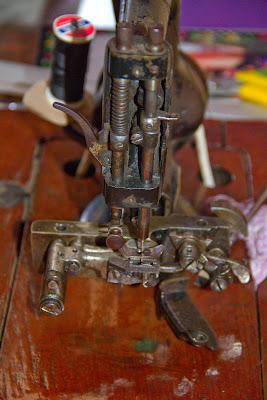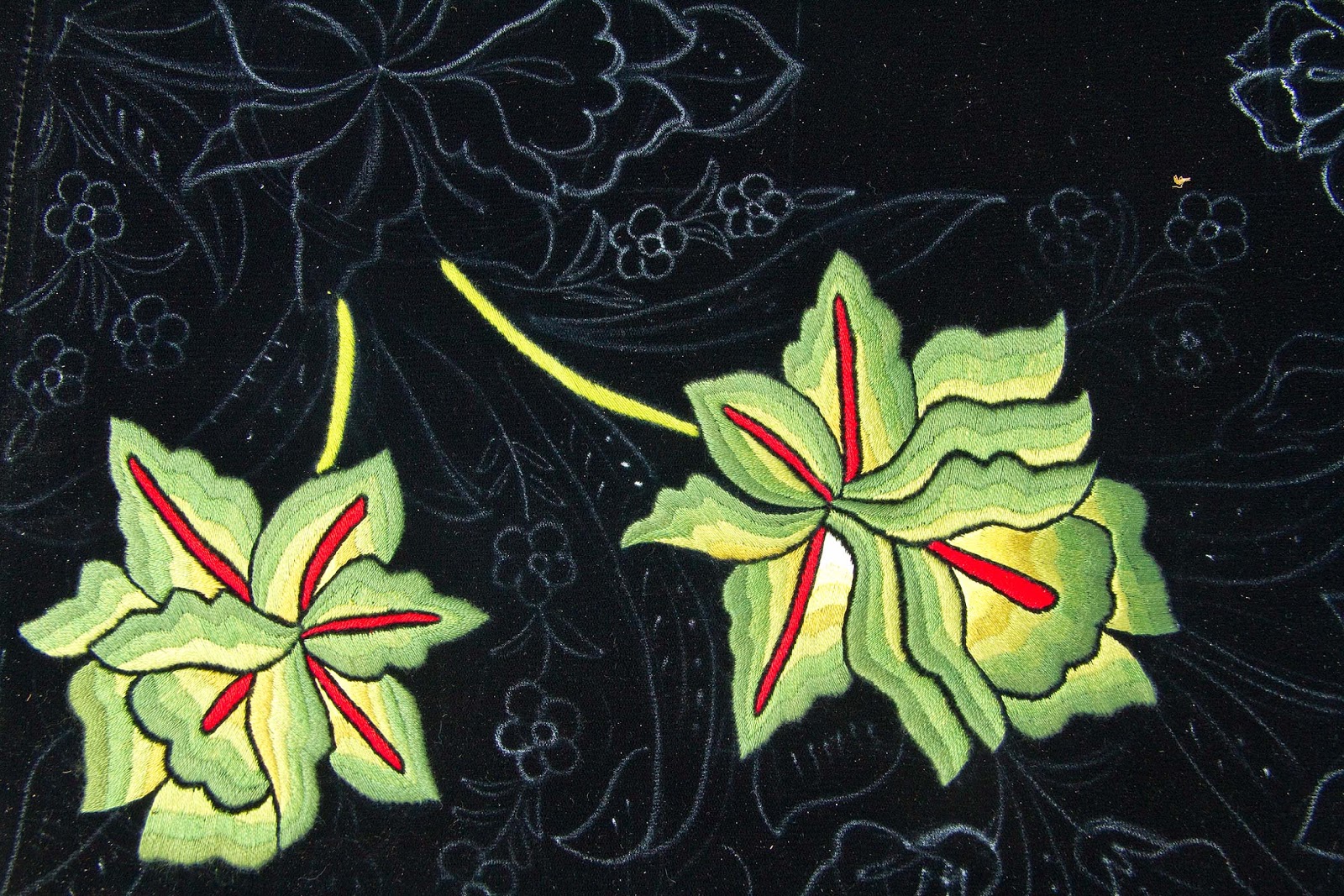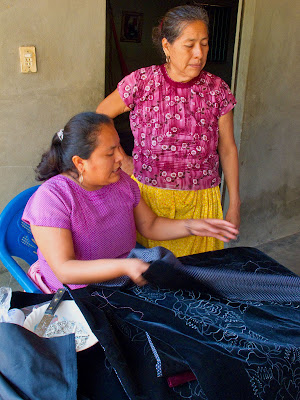No muy lejos de Tehuantepec está el pequeño pueblo de Santa Rosa,
en el que casi todas las mujeres pasan parte del día bordando blusas encargadas
por dueños de tiendas y mujeres de los pueblos vecinos. Hay dos tipos
diferentes del bordado, flores hechas por modelos de mano y geométricos hechos
con pequeñas máquinas de coser antiguas. Un huipil solo puede usar uno o el
otro tipo de bordado o combinar ambos en una sola pieza. Las imágenes muestran ambos tipos de
bordados realizados y las imágines también mostrar otra mujer que trabaja como
caricaturista para dibujar los patrones sobre terciopelo utilizando creyón.
Not far from Tehuantepec is the little village of Santa Rosa. Here
many of the women spend part of the day embroidering huipils that are
commissioned by shop owners and women from the neighboring towns. There are two different types of embroidery, flowers done by hand
and geometric patterns done on small antique sewing machines. A single huipil may use one or the
other type of embroidery or combine both on a single piece. The pictures show both types of
embroidery being made and pictures also show another woman who works as a
cartoonist to draw the patterns on the velvet by using crayon.
En 1851 Isaac Merritt Singer inventó la primera máquina de coser
práctica del mundo. Esta máquina tenía una aguja de ojo derecho y un servicio
de transporte transversal, un brazo voladizo, una mesa para apoyar el paño, un
prensatelas para sujetar el material contra el movimiento ascendente de la
aguja y una rueda alimentadora rugosa que se extiende a través de una ranura en
la tabla. Movimiento fue comunicada al brazo de la aguja y transporte por medio
de engranajes. También tuvo la idea de utilizar un pedal similar de una rueca;
otras máquinas en el tiempo utilizan una manivela para generar energía.
In 1851 Isaac Merritt Singer invented the world’s first practical
sewing machine. This machine had a
straight eye needle and a transverse shuttle, an overhanging arm, a table to
support the cloth, a presser foot to hold the material against the upward
stroke of the needle, and a roughened feed wheel extending through a slot in
the table. Motion was communicated to the needle arm and shuttle by means of
gears. He also had the idea of using a treadle similar to that of a spinning
wheel; other machines at the time used a hand crank to generate power.

I have more pictures on my Picasa web album.













No comments:
Post a Comment